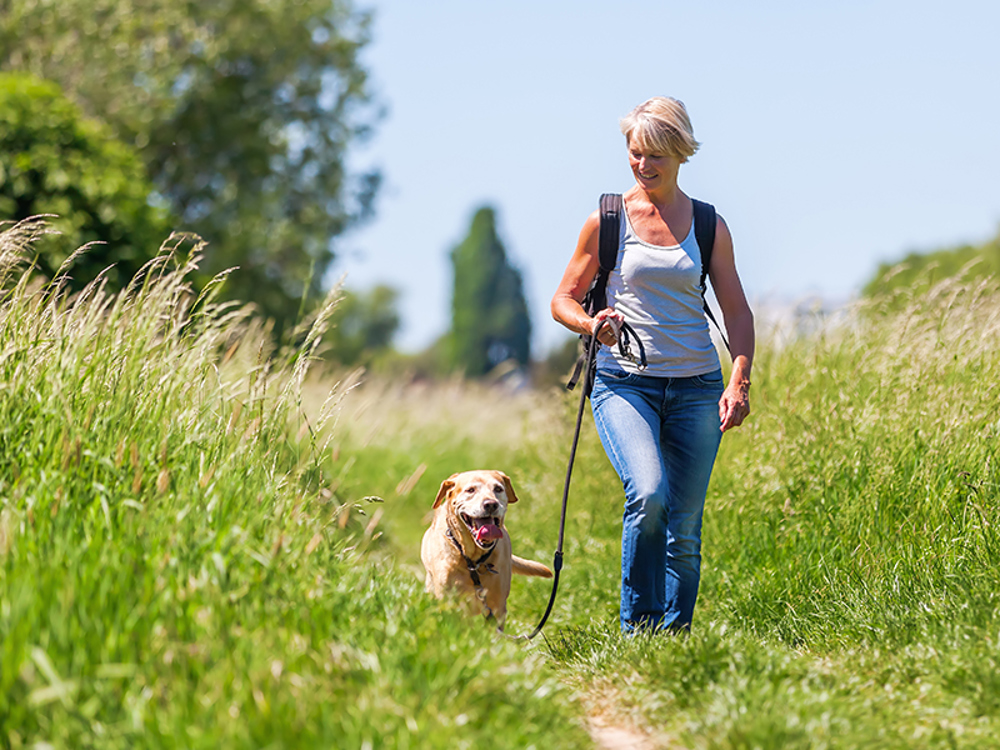
Walking your dog in the countryside exposes dog owners to risk of death and life-changing injuries by cattle. We are gravely concerned that proven best practice on how to reduce the risks of cattle trampling for farmers and walkers is not being consistently applied and that known dangers are routinely ignored due to lack of funding and awareness by local authorities and Government. As cattle are increasingly grazed on publicly accessible green spaces and common land, it is becoming harder for walkers with dogs to avoid conflict with cattle.
Background
Dog walkers are the most likely countryside visitor to be killed or seriously injured by cattle, with approximately one in four of all reported incidents resulting in a human fatality.
The Health and Safety Executive publishes extensive guidance for farmers on managing cattle and public access, but there is growing evidence that farmers do not always follow the advice or even know about it. The University of Liverpool’s School of Veterinary Science found significant gaps and inconsistencies in advice given to walkers about how to stay safe around cattle.
The ‘keeper’ – e.g. the farmer – of the cattle is responsible for preventing them from causing harm or injury to people, even if they behave unpredictably. Thus, whilst warning signs to help walkers avoid danger are helpful, effective management and the minimization of risks still rests with the farmer – eliminating risks could include, for example, keeping reactive cattle away from where people have a right to walk. Legal action has been taken in some circumstances, such as when deaths and serious injuries have occurred; however, prosecuting farmers for acting unlawfully or negligently does not put right life-changing injuries and thus more action must be taken to prevent injuries and deaths in the first place.
The Kennel Club’s position
We work closely alongside local authorities to provide common-sense and practical solutions to keep both walkers and farmers safe. For example, we have supported Cornwall County Council’s pilot project to provide safe, temporary, and well-signposted alternative paths around cattle to keep people safe; we hope to see this approach followed by farmers and local councils across the country. We are also members of the South West Countries Access and Livestock Group which works to make farmers more aware of the existing Health and Safety Executive (HSE) guidance on cattle safety and public access.
The Kennel Club has been actively working with Natural England to ensure its 2021 review of the Countryside Code for England better highlights how walkers can stay safe around cattle, with a view to prompting improvements in messaging elsewhere across the UK. We have also worked closely with them to ensure that the HSE is involved, and its guidance followed, when farmers apply to have access to land closed due to cattle presenting a risk of death or injury to walkers.
We are not opposed to public rights of way being legally diverted if there is no alternative way to keep countryside visitors safe; however, this must be done by agreement between walkers, farmers, and the local council, and not result in replacement paths being harder to use or more unsafe.
How to keep yourself safe
While the rules about where you can go and what you can do in the outdoors vary depending where you are in the UK, the advice about how to stay safe around cattle is the same wherever you are:
Stop, look and listen before entering a field; be aware of any cattle present
Always keep your dog on a short lead around cows and any other farm animals
Find the safest route around the farm animals, giving them plenty of space; divert of the marked path if you need to. Never walk between cows and calves.
Exit the area calmly and quickly if threatened, releasing your dog to make it easier for you both to reach safety separately.
Remember: while you can often see signs telling you to stick to paths and keep dogs on leads around all farm animals, such rules do not apply when you are trying to protect yourself from injury.
While picking up your dog may feel like the most natural thing to do when threatened by cattle, this can make you more likely to be injured.
Do not hesitate to let your dog off the lead if you are threatened by cattle and take the quickest route out of danger, even if this means not using an official path.
What to do if you are injured or experience a near miss
It is vitally important that near misses, as well as actual injuries, are reported as this can prevent a more serious injury or death occurring next time. In this situation, you must contact:
- Your local council’s rights of way or countryside access team – you will be able to find their details on the council’s website
- The Health and Safety Executive – this can be done via email, online, or phone. In England, Scotland and Wales, call 0300 003 1647. In Northern Ireland, call 0800 0320 121.
- You may also wish to speak to a solicitor if you want to claim compensation from the farmer for any injuries or other losses arising from being chased or injured by cattle.
With 10 million cattle and an estimated 20 billion dog walks each year in the UK, fatalities and injuries are rare. However, when incidents do occur, the consequences can be devastating – so enjoy your dog walks but keep a look out for cattle, follow the advice above, and report any problems you encounter.
For more detailed information relating to dog walking and cattle safety, please contact us via email or on Twitter.
